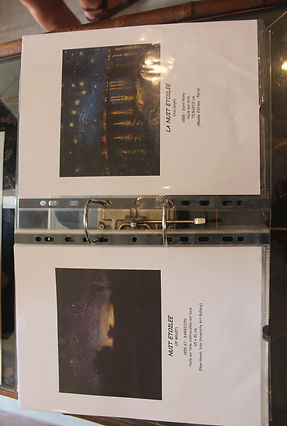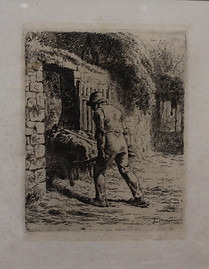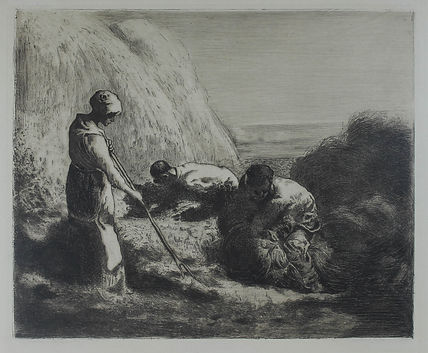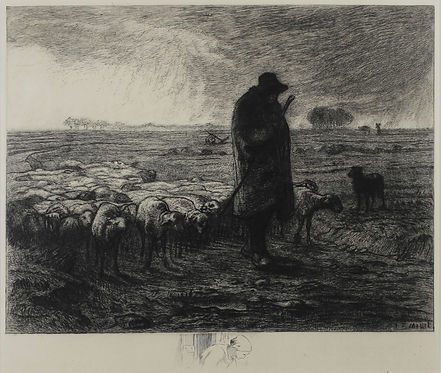Undergraduate research on the history of Barbizon by Julia Mielke

Jean-François Millet
Born October 4th, 1814 in Gruchy (near Gréville). Died January 20th, 1875 in Barbizon.
Jean-François Millet was born from a very close-knit family of modest farmers. His father did wood and clay sculpting, and encouraged Millet to cultivate his talent of drawing. In 1833, Millet’s father registered him at Cherbourg in a painting studio of David Dumouchel’s school. In 1837, Millet was granted a scholarship to enter the École des Beaux Arts, (Fine Arts school) in Paris. After that, in 1840, Millet returned to Cherbourg where he made a living as a portraitist.
Millet's earlier paintings before Barbizon incorporated religious imagery, which was associated with ideals of Romanticism. This reflects that his art education was during this time.
Then the Cholera epidemic hit, along with continuation of the French Revolution. So, in 1849 Millet, his wife, and their three kids sought refuge at the edge of the Fontainebleau Forest, in Barbizon. There, Millet found the place that he would live for the rest of his life.

"Les Glaneuses"
August Barry after Jean-François Millet
“For me, it’s Millet the essentially contemporary painter, thanks to whom the horizon was opened in front of us.” Stated Vincent Van Gogh, whom thought of Millet as a father.




"Femme Vidant un Seau"
Jean-François Millet

"Paysan Rentrant du Fumier"
Jean-François Millet


"Les Botteleurs de Foin"
Emile Boilvin after Jean-François Millet


In Millet’s work of realism and landscape in Barbizon, he preferred to show the life of poor farmers and the peasant class-a class that he respected and considered himself to be a part of. He was thought of as the painter of farmers. Millet’s work displays how he constantly thought of the links between man and nature. His personal beliefs, use of Naturalism, and un-romanticized imagery helped lay the foundation for later art movements. Millet's style had delicate tones and refined touches. His looser, more gestural brushwork that he developed in Barbizon created early ideas of impressionism, and quickly began to influence many other artists.
Today, Millet’s home studio is an exhibition of Millet’s etchings, engravings, drawings, and paintings. It is also an exhibition on Millet’s home life and interests, having objects such as wooden clogs, family photos, sculptures, and original furniture. Every three months, contemporary artists who continue the historical work of the French landscape exhibit in Millet’s home.

Millet was fascinated by the new invention of photography. He collected post cards and pictures of pieces of artwork. He insisted that his work should be the subject of photographic reproductions. He willingly posed for photographers and, less known, tried to take pictures himself in 1860. He has three photographic plates preserved at The National Library. Above are his photographs.

Sketch by Jean-François Millet

"La Petite Bergère"
Lionel-Astride Lecouteux after Jean-François Millet

"Rentrée de Troupeau"
Gustave Greux after Jean-François Millet
"Le Semeur"
Charles-Auguste Bouvier after Jean-François Millet
